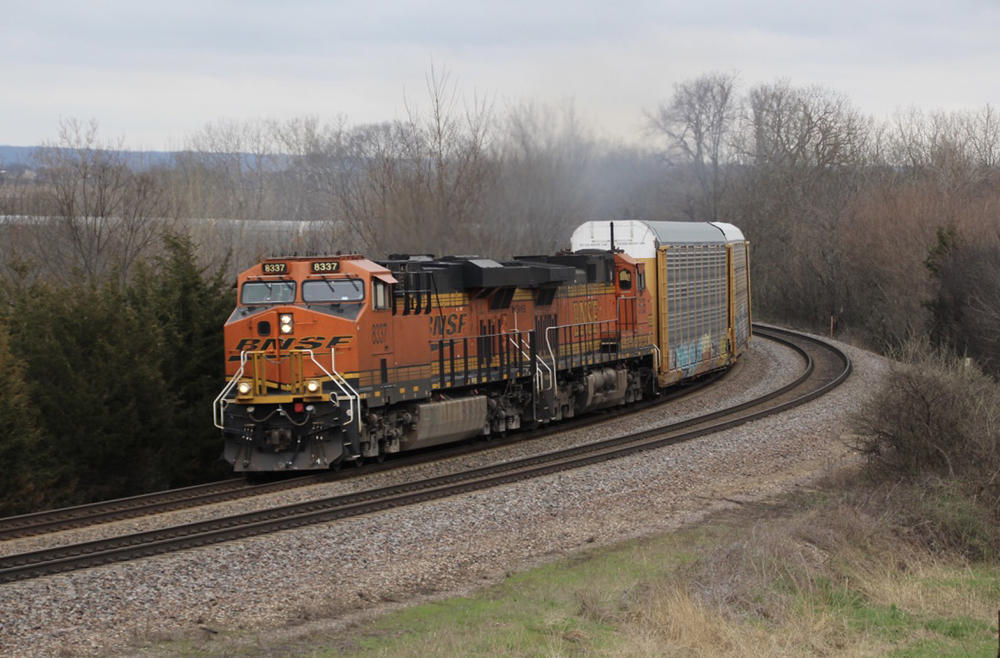
WASHINGTON — Utilities are worried that the slowdown in coal deliveries could threaten U.S. electricity supply and destabilize the power grid.
Chemical producers say erratic rail service has forced them to curtail production of essentials like chlorine used to treat public drinking water systems and the plastics used in medical products.
And one of the nation’s largest retailers of diesel fuel, renewable diesel, ethanol, and diesel exhaust fluid says Union Pacific’s plan to cut its shipments by 50% will create fuel shortages, bring trucking to a halt, and raise prices at the pump.
Those were among the shipper concerns raised on Wednesday during a second day of hearings on railroad service problems that have been created by a shortage of train crews.
“The nation’s supply chains are in a dire situation today because of this. And it’s not getting better, it’s getting worse. And the longer it goes on, the worse it’s going to get,” Ross Corthell, chair of the National Industrial Transportation League’s rail committee, told the Surface Transportation Board.
He adds: “I don’t want to be doomsday, but it’s critical to our national security at some point in time. We have to be able to move commodities. And it’s becoming more and more challenging every day.”
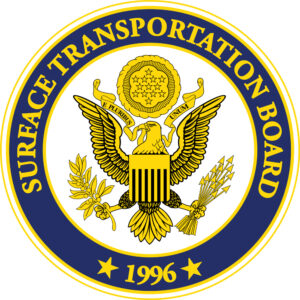 Shippers complained about how lengthy delays, erratic service, and missed switches forced them to curtail or halt production or shift some shipments to more expensive trucks. Some products, such as chlorine and coal, have no alternative to rail. “We need to move coal and right now it’s just not happening,” says Katie Mills, a lawyer for the National Mining Association.
Shippers complained about how lengthy delays, erratic service, and missed switches forced them to curtail or halt production or shift some shipments to more expensive trucks. Some products, such as chlorine and coal, have no alternative to rail. “We need to move coal and right now it’s just not happening,” says Katie Mills, a lawyer for the National Mining Association.
Shameek Konar, CEO of Pilot Travel Centers, says UP’s plan to restrict traffic as a way to ease congestion will squeeze already tight supplies of diesel fuel nationwide, and particularly of renewable diesel fuel required in California.
UP initially asked Pilot to curtail its shipments by 26%, but subsequently said it would have to reduce its carloads by 50% or face railroad-imposed embargoes, Konar says. Unlike some shippers, who ordered extra cars as cycle times increased on UP, Pilot’s car fleet has held steady since January. UP gave Pilot a week to voluntarily reduce shipments but has not yet issued an embargo, Konar says. Pilot outlined the situation in a filing to the board last week.
Eric Gehringer, UP’s executive vice president of operations, says the railroad continues to work with customers like Pilot to fully understand their car supply and shipment needs. “We’re still working through those details,” he says. “So we’re not pressuring them, saying you have to be at this level by this date. We’re still in the collaborative phase of ‘How can we do this together?’ ”
STB steps up criticism
STB Chairman Martin J. Oberman, who criticized CSX Transportation and Norfolk Southern officials in the first day of hearings, on Wednesday scolded BNSF Railway and UP for not maintaining a cushion of employees to handle a surge in traffic.
Oberman pointed to June 2021 letters from BNSF CEO Katie Farmer and UP CEO Lance Fritz, who both offered assurances that their railroads would have enough crews to meet rising demand. Instead, both railroads have been holding a rising number of trains per day for a lack of crews and locomotives.
Railroad officials apologized and said they were working as quickly as possible to hire crews and to pull locomotives out of storage. The railroads attributed their service problems to a combination factors: Traffic that rebounded faster than expected from pandemic lows; tangles in other links in the global supply chain, including ports, trucking, and warehouses; lower than anticipated return of furloughed crew members; higher than expected attrition of train crews and conductor trainees; and the struggle to hire conductors in a tight job market.
BNSF aims to hire 1,700 conductors this year; UP says it will hire 1,400.
“As BNSF has made clear in our communication with the board and to our customers, we’re not here to make excuses,” says Matt Garland, BNSF’s vice president of transportation. “Our service is our responsibility and we simply have not met our customer expectations in recent months.”
BNSF expects service to be choppy over the next 30 days, but within 60 days should start to show signs of improvement as conductor trainees are deployed across the system, Garland told the board.
“Union Pacific understands the severity of the situation and is working hard to restore service to the levels our customers expect,” Gehringer says.
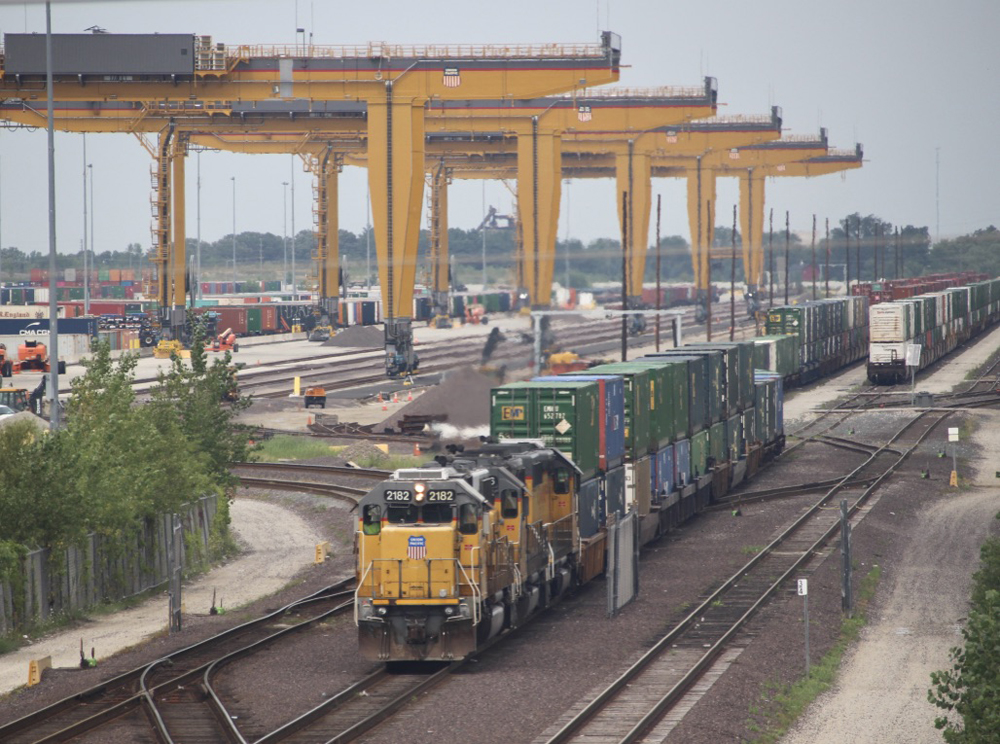
UP’s terminals are fluid, he says, but main lines are congested due to excess car inventory. As UP’s customers have put 30,000 more cars into the system as the railroad slowed down, UP has had to run 70 to 90 additional trains per day. And that compounded congestion that feeds on itself by requiring more crews and more locomotives.
“With the amount of congestion currently on the network, it will likely take us the better half of the year to decongest the network, assuming minimal variability on the network in addition to our customers’ crucial help in taking private cars off the network,” Gehringer says, based on the railroad’s recovery from similar events in 2014, 2017, and 2019.
Board member Robert Primus was critical of UP’s use of embargoes, which he said are far and away higher than the rest of the industry. And he said it shows UP is penalizing its customers for the railroad’s inability to provide efficient and reliable service.
Gehringer said UP only resorts to embargoes after lengthy discussions with customers and doesn’t restrict traffic if congestion at a customer facility or local serving is a result of UP service failures.
BNSF defended its controversial Hi-Viz attendance policy, which is designed to boost crew availability. Crews can still use vacation and personal days, Garland says, and more than 90% of crews have earned points for good attendance since the policy was implemented this year.
And he disputed labor union claims that the attendance policy has led to a wave of resignations. Attrition is slightly higher than normal, Garland says, but most of the 300 engineers and conductors who have left recently had not worked a shift in the past six months.
KCS to the rescue?
With UP and BNSF traffic snarled in the busy Houston terminal, Kansas City Southern has offered use of its crews to move dead trains parked on main lines. KCS, which was singled out for providing good service and was not required to attend the STB hearing, made the offer in a Friday letter to the STB.
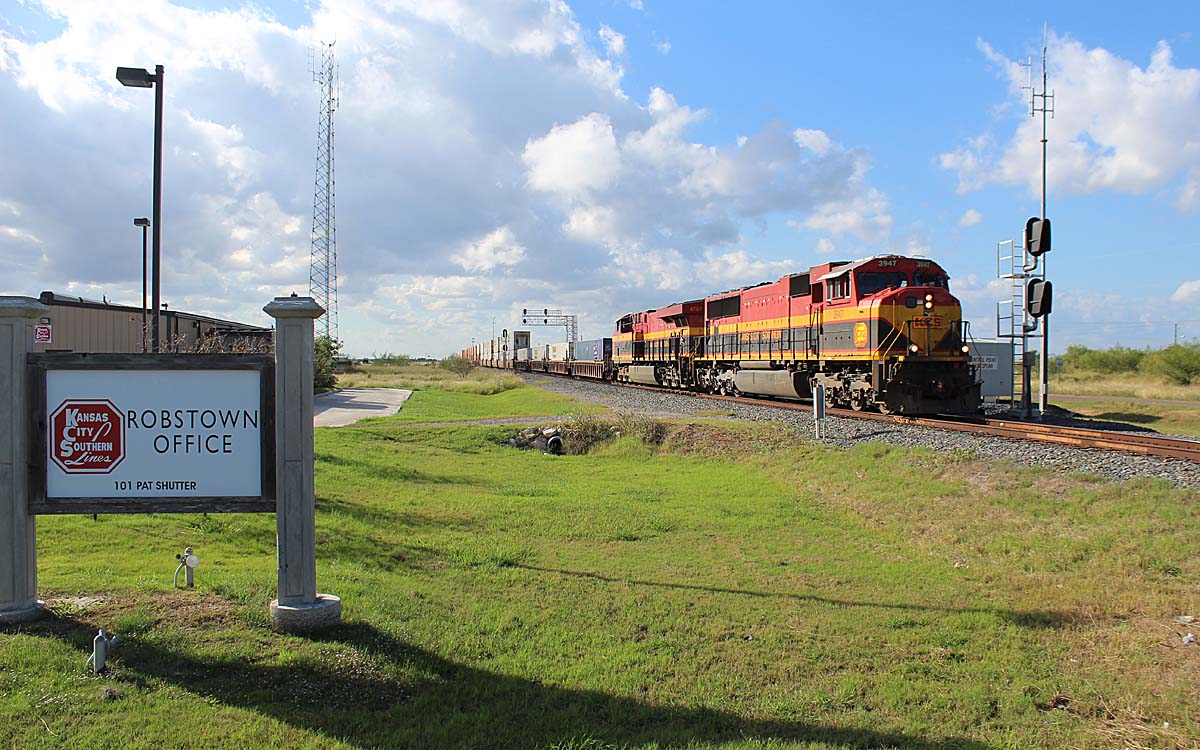
The congestion has hurt the operation of KCS cross-border traffic that relies on long segments of trackage rights, mostly on UP, through Houston and across south Texas. On average, KCS has had to use two crews — instead of one — to move traffic between Beaumont and Kendleton, west of Houston.
“To help resolve the Houston congestion problems, KCS has actually offered its crews on several occasions to move BNSF and UP trains that lacked crews off the main line so that KCS trains can pass,” John Orr, executive vice president of operations, wrote to the board. “We have also moved our interchange with BNSF for some auto traffic from the Robstown/Corpus Christi area to Rosenberg, just west of Houston, so BNSF has to expend fewer crews from their over-taxed crew base.”
Orr suggested that the STB might consider granting KCS temporary trackage rights so that it and other railroads could bypass Houston congestion to reach the border at Laredo, Texas.
“Can we do something to ease the congestion in Houston, at least … as a temporary measure if not a permanent one,” Oberman asked.
UP and BNSF were unaware of the KCS filing but said they’d follow up. Gehringer was surprised about KCS’s claims, saying UP has spent $250 million in the last two years to extend tracks in its Englewood and Settegast yards in Houston, which are fed by a triple-track main. And Garland said BNSF and UP collaborate well every day to move traffic through Houston.
Oberman asked the railroads to work together. “Really, you need to pull out all the stops,” he says.
More PSR criticism
For a second day, shippers and rail labor criticized the railroads’ implementation of the low-cost Precision Scheduled Railroading operating model and blamed it for cuts in personnel, yards, locomotives, and local service.
The NIT League’s Corthell disputed railroads’ claims that their PSR implementations had been flawless, noting that local service complaints were brought to the board in 2019 – when CSX and NS both said their service was at record levels of reliability.
And while railroads have blamed their service failures on crew availability and power, Corthell says the problem did not begin during the pandemic. “The problem started before COVID and it has its roots in the financial model known as Precision Scheduled Railroading, or PSR,” Corthell says. “And yes, I did say financial model.”
Railroads have reduced local service in pursuit of lower operating ratios, Corthell says, and have continued to miss scheduled switches at an alarming rate. “Precision Scheduled Railroading has proven to be anything but precise at origin and destination,” he says.
Unions representing mechanical and signal workers told the board that railroads are cannibalizing stored locomotives to keep active units in service and claimed that shop forces, car inspectors, and signal maintainers are spread too thin.
Many have resigned due to working conditions, they said, including machinists with 10 to 20 years experience who have left Railroad Retirement benefits behind.
“The problem is not inherently with a scheduled railroad, but a ruthless cost-cutting business model,” says labor lawyer Richard Edelman.
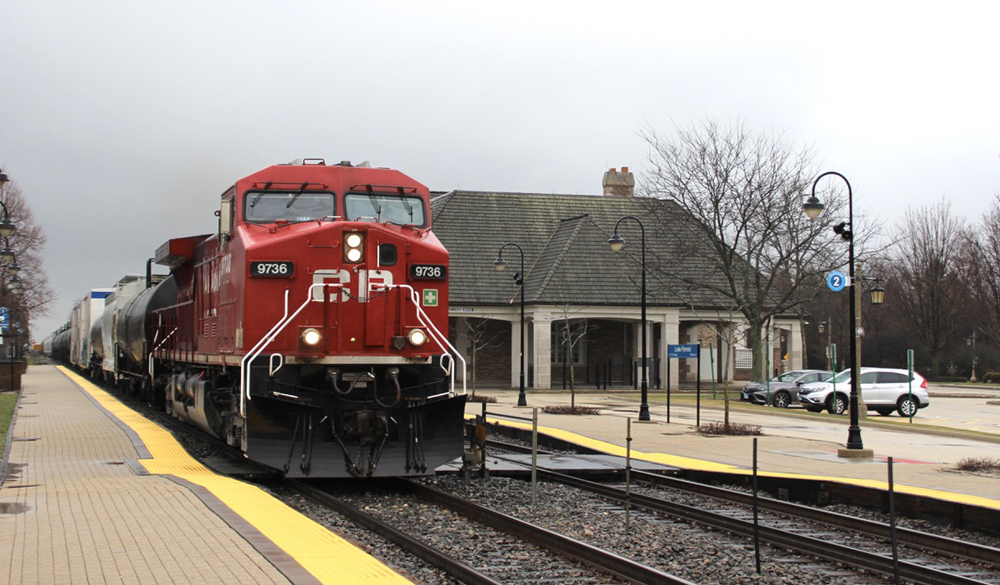
Canadian Pacific, which like Canadian National and KCS was not required to attend the hearing, defended PSR. James Clements, the railway’s senior vice president of strategic planning and technology transformation, says CP has grown and run well despite disruptions over the past three years.
The railway’s improved financial performance since adopting PSR in 2012 allowed it to invest in track upgrades, longer sidings, centralized traffic control, and yards that can handle longer trains. “We have built what I would call the foundation upon which you operate the PSR model,” Clements says, noting improvements in the railway’s service and customer satisfaction.
Primus thanked CP and CN for attending. “You guys weren’t on the firing squad list to be here, and yet you came,” he says. But he was critical of Farmer and Fritz for not attending.














If I were Eric Gehringer:
1. I’d contact every short-line, regional, and terminal railroad that interchanges with UP and ask: “Are there UP customers with freight sidings on our line(s) close to our interchange point(s) that you should serve with car pick-up and delivery service with your crews?”
2. I’d contact BNSF and (a) ask: “Can you handle our business on your trains on our ex-DRG&W main Denver – Salt Lake City?”
(b) “Can we run a pool freight operation Portlan d Seattle with gtrains h andli ng both system;’s business and crews and power detgermined by best availability?”
3. I’d contact KCS and ask about their handling the UP business on their trains using the Texas trackage-rights on the UP line.
I have almost 30 years on the railroad thankfully on the short line / reginal rail side of things. but I can tell with no doubt that PSR is the biggest cause of the problems. get ridcof PSR and the current crop of worthless CEOs and there worship of the shareholder and most of the problems go away.
The railroads can crow all they want about crew problems but it’s entirely self inflicted. Matt garland with the Bnsf is completely lying in his responses. Guys are going work on their required rest every day and we are all getting denied our personal leave days and vacation days on a consistent basis I personally just had days denied this week alone. The allotment is not full yet they still deny for crew availability. The new attendance policy we have is doing nothing more that enlightening all train crew members to the fact that they no longer need this place and are leaving in droves. By the way there are just as many engineers leaving as conductors so mr csx’s comments as to giving him one man crews will solve his problems is a farce. They will continue to have problems as long as they keep up this idea that they can work people to death without rest and without time off and expect crews to stick around. They will need to admit that they need to find a balance that works for both sides or they will have problems from here on out.
What railroads don’t want to hear. you don’t have a crew problem! The industry is burning crews. Size, velocity ,dwell are the problem. some examples; 200 car train, 3 locomotives but optimizer says you only need 1 on line. leave point A destined to point B, but within 5 minutes the locomotive engineer knows the train is in trouble. Velocity between 15 to 35 mph, 3 crews latter arrives at point B. plus crews on duty until returned to home terminal. next 100 car train, 2 loco’s, no optimizing crew in charge, dwell improvements to track speed which does the same for velocity arrives point B . return same. Just gained 2 or more crews. You decide!
I have a son who is a contractor in Orlando. One of his concrete suppliers said he could not provide concrete for a pour next week due to no cement. further investigation said the cement manufacturer could not get rail pick up and had to shut down production temporary when all storage filled including siding of full rail cars. Was only able to truck small amounts to batch plants.
Wonder what the costs of having to restart a cement plant?
I could, if I wanted to, throw it all back in the face of all the manufacturers that switched to “JUST-IN-TIME” delivery and receiving method. Just imagine if large corporations went back to storing 30 days worth of materials on site? You think there’d be problem then?
Mr McFarlane I agree that manufactures should have some stock on hand but. The railroads said to them no problem we can handle that for a price. So now come to find out we CAN’T handle that but the price is not going down for maybe you’ll get it in two weeks.
Well heck everything will be all right now because they said they were sorry they don’t know how to run a railroad. By the end of the year everything will be A OK.
Amazing the UP says their yards are fluid it is just that damn mainline traffic fouling everything up (well other than Houston)
Sounds like Biden’s latest speech on the Russia kelpitcratsorary. Time to send for the Big Fuzzy Rabbit.
The railroads sound just as bad a big oil. Were not causing the problems but were making record profits.